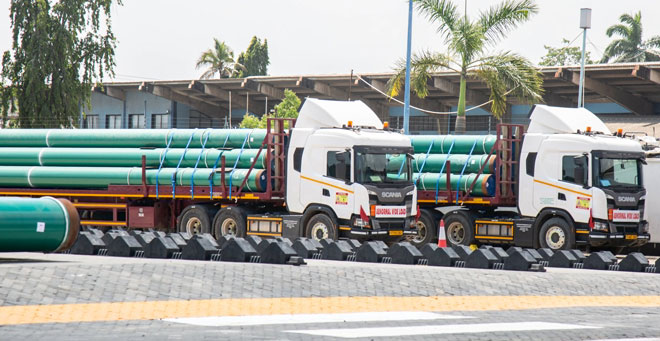
NAIROBI, Kenya | Xinhua | Kenya and Uganda have officially begun talks to extend the petroleum products pipeline from Eldoret in western Kenya to the Ugandan capital of Kampala.
The Kenya Pipeline Company (KPC) said on Tuesday that the project, poised to significantly impact the region’s fuel import market, will entail the construction of a multi-product oil pipeline from Eldoret to Malaba (the Kenya-Uganda border) on the Kenyan side.
The KPC also said Uganda will be responsible for building a connecting line to Kampala, while future expansions to the Rwandan capital of Kigali are also being considered.
“Extension of the pipeline to Uganda is a strategic move for Kenya as the country seeks to regain its competitive advantage in the petroleum export market, particularly in light of Uganda’s new importation strategy,” KPC Managing Director Joe Sang said in a statement issued in the Kenyan capital of Nairobi.
Sang said the KPC is open and willing to cooperate with the Ugandan government to lay the Eldoret-Malaba pipeline.
The move came after Ugandan Minister of Energy and Mineral Development Ruth Ssentamu held a meeting with officials from the Kenyan Ministry of Energy in Nairobi last week. Ssentamu said the visit entailed planning and preparation for the launch of the project as well as understanding the KPC’s operations, infrastructure, and human capacity.
This initiative also followed Uganda’s recent transition to independent fuel imports, which began in early July, thereby ending its previous dependence on Kenya for the supply of refined petroleum products.
Under a new agreement between the Uganda National Oil Corporation and Vitol Bahrain, an energy company, Uganda aims to secure more competitive fuel prices while continuing to rely on Kenya’s Port of Mombasa and the KPC’s infrastructure to transport these products to the western Kenyan depots of Eldoret and Kisumu.
The two neighboring countries have pledged to appoint a joint committee to oversee quality control and have agreed to mobilize resources to facilitate the successful implementation of this regional infrastructure. ■
 The Independent Uganda: You get the Truth we Pay the Price
The Independent Uganda: You get the Truth we Pay the Price



